When looking to hire new employees, you should have a clear idea of the type of candidate to hire- particularly which skills, qualities, and experience to look for to help you get a solid group of candidates. This can be achieved from a detailed job description. Without one, you (the recruiter) cannot hope to get the best candidate that will match your organization’s standards and qualifications.
Potential employees also need specific descriptions to help them decide if the position is a great fit for their qualifications and their desired career. A well-crafted, accurate and detailed description will ensure that only the most relevant, qualified candidates apply for the open position.
Descriptions Overview
The job description, also referred to as JD, is a document that describes the type of work to be performed by an employee. It summarizes all the key duties, responsibilities, skills, and qualifications.
Having a well-crafted description creates a concrete set of expectations for the employer to communicate to their employees. The employees are made aware of their responsibilities as outlined in the JD, so there is less confusion about the expectations. It can also serve as an evaluation tool for employers to measure the performance based on the pre-defined duties and responsibilities.
Download Free Templates


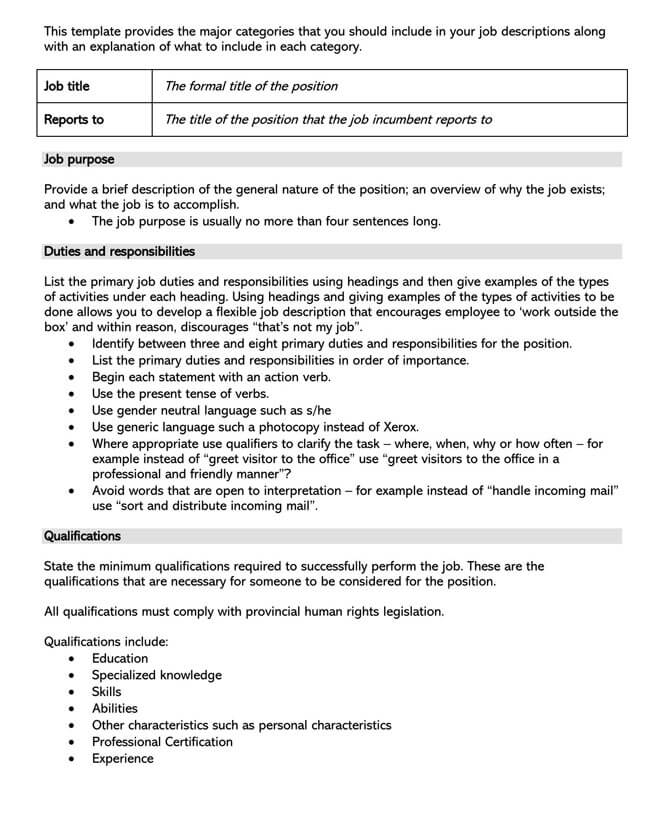

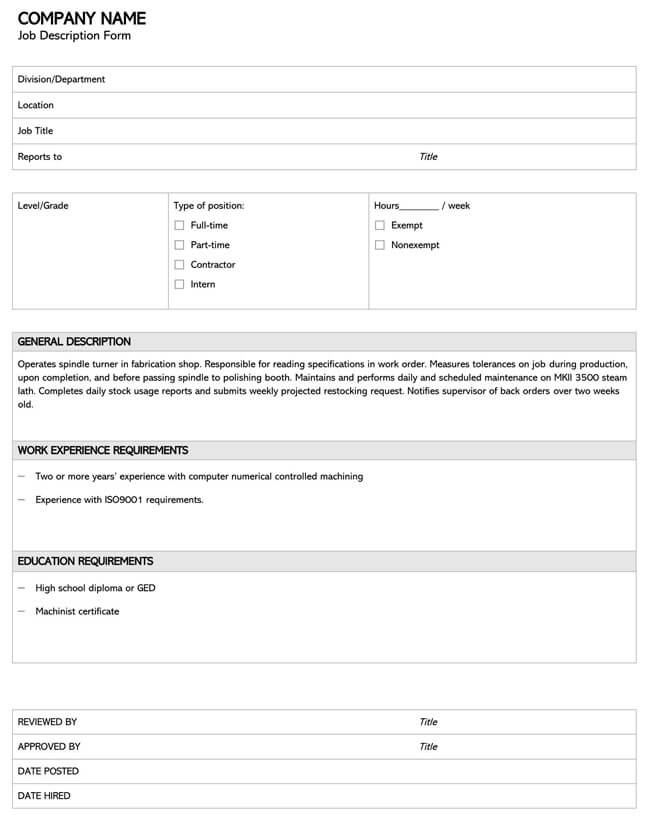



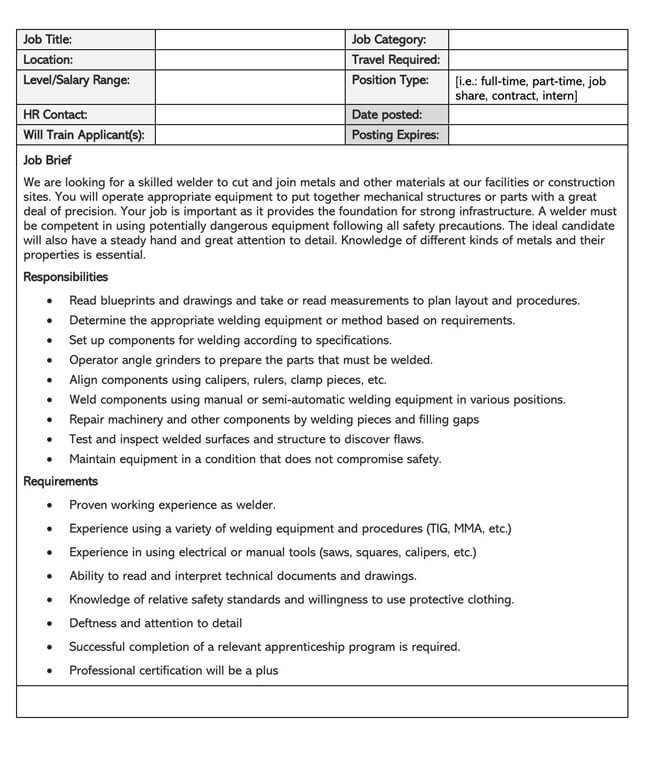


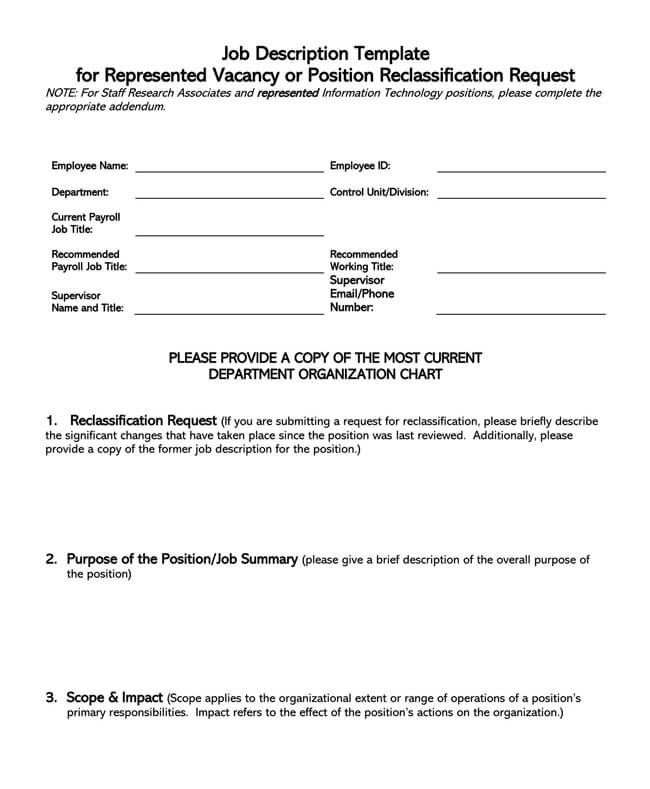

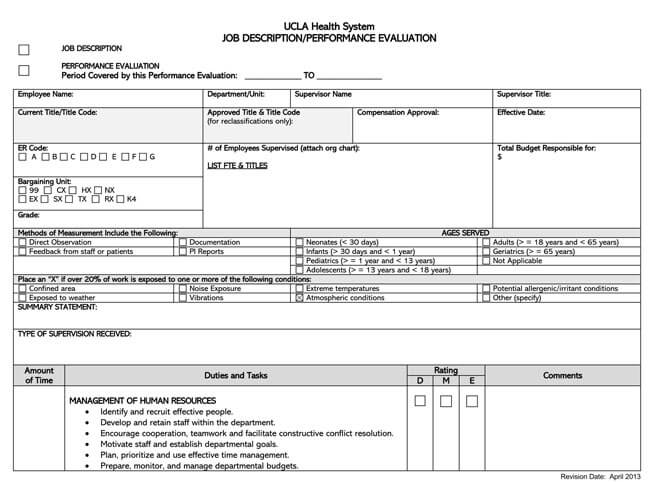


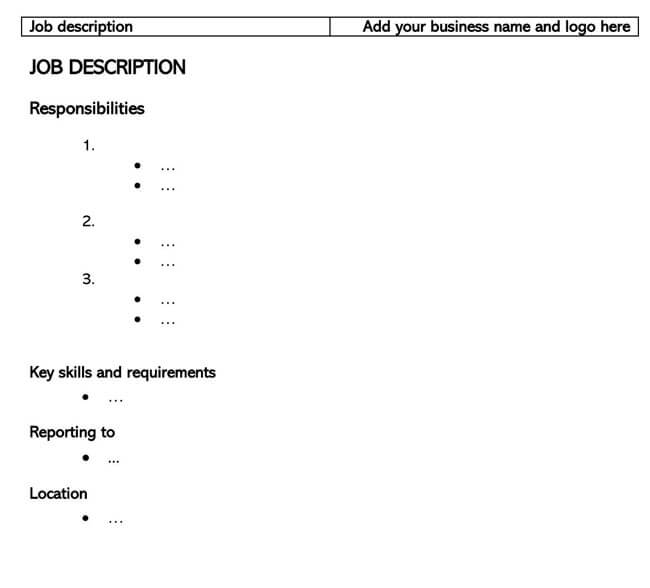

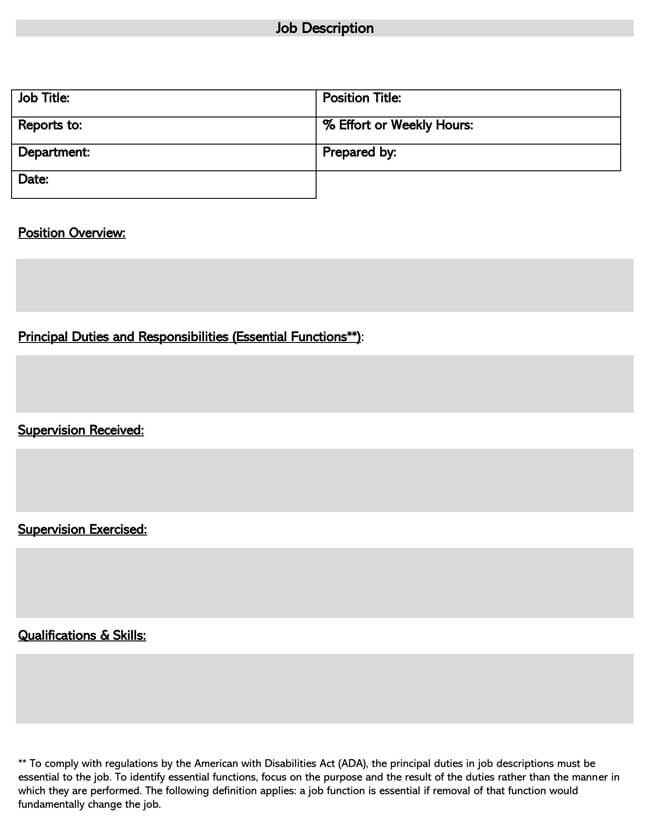

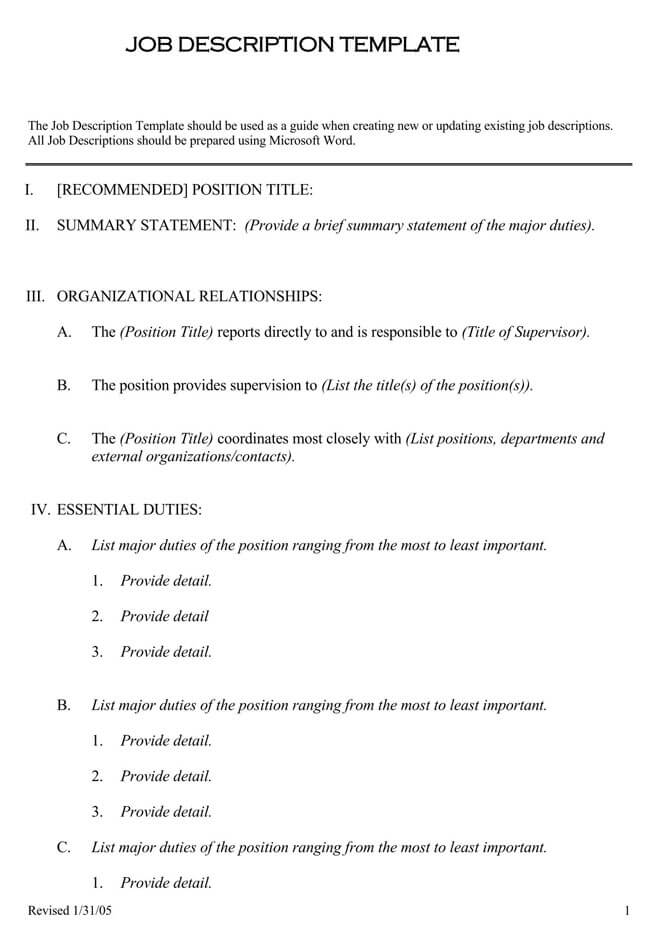
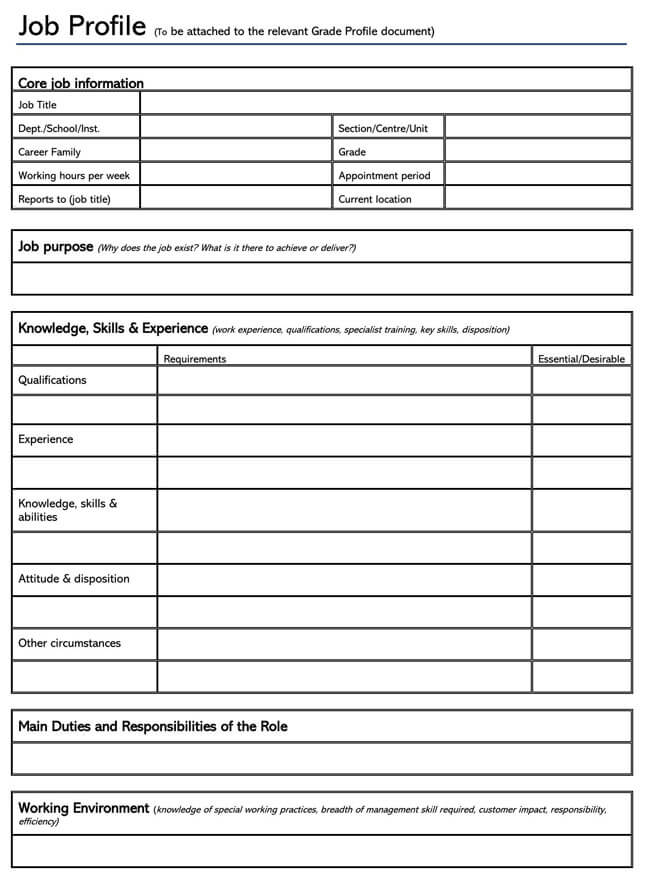

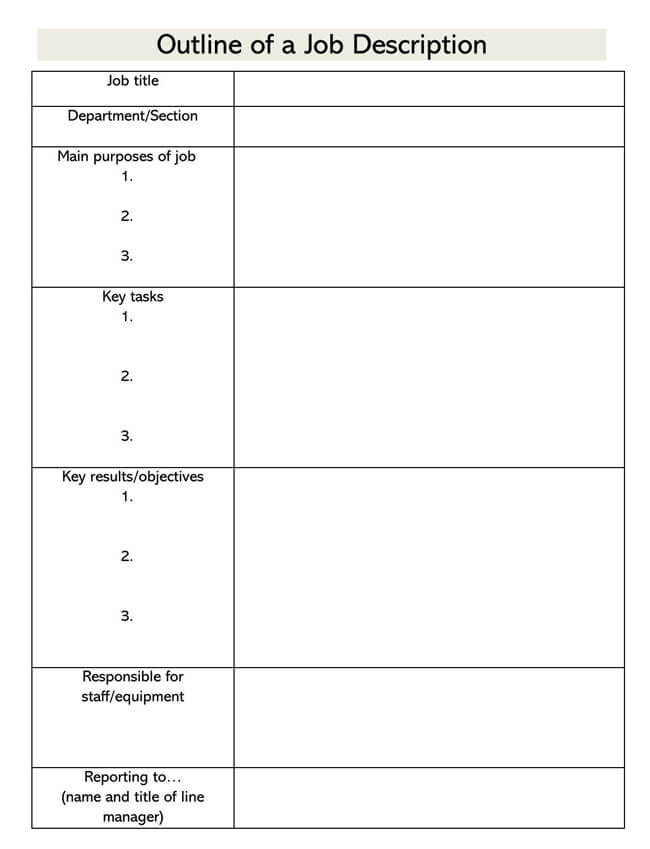


Impact of a Professional Description
Having a description in place is a great start to avoiding being in situations where your employees do not fulfill their duties and responsibilities. A well-defined job description helps set clear expectations with your employees at the outset of their employment about what is expected of them. Without it in place, it can be quite difficult for your employee to be held accountable for their role.
A well-crafted description can help improve your ability to manage your staff in the following ways:
Improved communication
A well-crafted job description helps inform the employee whom they are to report to and when. Proper communication leads to improved work performance
Salary administration
It should outline the expected salary and any other benefits that come with the job. The description should mention the salary amount, payment mode, and date to avoid any confusion.
Framework for determining performance criteria
With the duties and responsibilities of the employee laid out in the description, it is easy for the manager or HR to gauge the employee’s performance.
The basis for recruiting
It lays out the foundation for recruitment. It highlights the skills, experiences, and qualifications that a candidate must possess for them to be accepted for a given role.
Staffing and planning
Depending on the organization’s size, it can help set out the required job groups-by laying out the skills and qualifications- and the number of candidates required for a given role.
Avoidance of misleading titles
When writing it, the first thing that one must include is the exact title for which they are looking to fill. This helps in making clear the title and avoiding any misleading titles and expectations.
Compliance with wage and hours laws
It ensures that the employer is in line with The Fair Labor Standards Act, which prescribes wages and overtime pay, which affects most private and public employment. The description highlights the number of hours the employee must work and the total wage they are to be paid for the hours worked.
Process improvement
Having a well-crafted description creates a concrete set of expectations for the employer to communicate to their employees. They are an integral component of any company. Not only is it important that they are accurate and thorough when drafted, but it is also crucial that they are kept up to date, as employee’s job functions may evolve with the growth or expansion of the business.
Writing a Professional Description
These are an important component of any organization. Not only is it important that they are accurate and thorough when drafted, but it is also crucial that they are kept up to date, as employee’s job functions may evolve with the growth or expansion of the business.
Here are the key components that you should include in your description:
Title
Start by including the title to help the potential/employees understand whom the description is for. The title should be brief and should accurately describe the job while at the same time retaining the consistency of your organization’s customs and standards. When writing it, try to avoid ambiguous language to avoid confusing the employees when applying for the job.
Summary
A good description will go far with an employer’s onboarding and recruitment efforts. It is important that you open with a strong, attention-grabbing summary to hook your readers with details about what makes your organization unique. The summary should provide an overview of your organization and expectation for the position. When writing it, it is important to always remember that it introduces your organization and employer brand. As such, you should include details about your organization’s culture to sum up why a candidate should consider working in your organization.
When writing the summary, make sure to include the exact location to help the potential applicants determine whether the location suits them. This will also ensure that you get candidates who reside close to your organization and may be willing to start working right away.
Duties
List down the core duties and responsibilities of the position. A clear description of the duties and responsibilities helps the candidate visualize a typical day at work and understand the work environment. Ensure that your list of duties and responsibilities is detailed but concise. Also, make sure to list down any duties that are unique to your organization. Being detailed when describing the duties will help the candidate determine if the job or organization is the right fit.
Some items to consider when writing the duties and responsibilities include:
- Include explanatory phrases which tell who, where and how often the duties and tasks are performed
- Identify areas of direct or indirect accountability
- Focus on the outcome of the tasks
- List the duties that reflect the position requirements and ensure that they are not based upon the capabilities of any one individual
- Describe the type and level of budgetary or financial responsibilities
- Reference areas of direct or indirect accountabilities
Skills and qualifications
When writing it, list down all the hard and soft skills. List the required level of knowledge, such as the level of education, experience, skills, abilities, knowledge required to do the job. When writing, try to focus on the minimum level of qualification required for an individual to be successful and productive in this role.
When writing, make sure to keep your list concise even though you may be tempted to include every requirement that you envision for your ideal candidate; including too many skills and qualifications could dissuade the potential candidates.
Salary and benefits
When your organization is looking to hire qualified employees and keep those employees loyal and productive, it is important that you provide them with a “package” that includes compensation, incentives, and benefits such as perks or rewards for good work and health insurance, or paid vacations.
Also, make sure to mention the salary range for each job advertised. This will help ensure that the candidates who apply are conversant with what you are offering.
What to Avoid While Writing the Description
Job descriptions say a lot about an organization and its culture. As such, there are various things that you want to avoid when writing it.
Such things include:
Discrimination
It is important that when writing it, you don’t discriminate against the potential applicant’s gender, race, color, religion, etc. If you are looking to promote a diverse workplace, make sure to include an equal opportunity disclaimer in the description.
Asking for too much
Do not include too many requirements in it. Only include what’s absolutely important, what can be learned on the job, and include only the must-have skills.
Negativity
It is important that you don’t use negative statements even if you are looking to eliminate unqualified candidates. For instance, leading with a statement like “Any candidate with less than four years of experience will not be considered for the position” may come off as a negative and unfriendly way to introduce your job and impact how the candidates view your employer brand and culture.
Unclear structure
A well-crafted description should be simple, neat, and attractive. You should keep in mind your target audience and the mode in which they will receive it. A well-structured section can help separate duties from requirements and help the candidate understand whether they fit the role or not.
Being mysterious
When you are looking to hire the best candidate with all the skills and experiences for your organization, it is important that you lay out all the requirements in detail. This will help ensure that only the best candidates apply for the position. Be upfront about any non-negotiable requirements, like certifications, working hours, and driving license. This way, you will avoid deal breakers later in your hiring process.
Frequently Asked Questions
Typically, a job description should have between 4,000-5,000 characters, which is equivalent to around 500-600 words.
You do not have to necessarily include the exact salary. The decision to mention the exact salary in it, however, is usually backed with the company’s policy on employee salary disclosure. Some companies may publicise their salaries while others do not. Make sure that before including the exact salary, you go through your company policies to ensure that you do not violate them.
Job analysis can be defined as the process of gathering information related to a specific job. The information may include the knowledge, skill, and ability possessed by the potential employee to perform the job effectively. The description, on the other hand, is a document indicating what it covers, i.e., the duties, tasks, responsibilities, powers, and authorities that come with the job.
Conclusion
Job descriptions are a great tool for any organization and serve as the foundation for every action that the organization takes. Whether it is used for hiring, conducting a performance review, or any other HR-related activities, it can help streamline all these processes. It is also a useful communication tool that helps inform the employees exactly what tasks you expect them to perform and address the quality and quantity of performance standards or even work rules applied to a given job. Without such clear communication, employees may not be able to perform to your company’s expectations.












